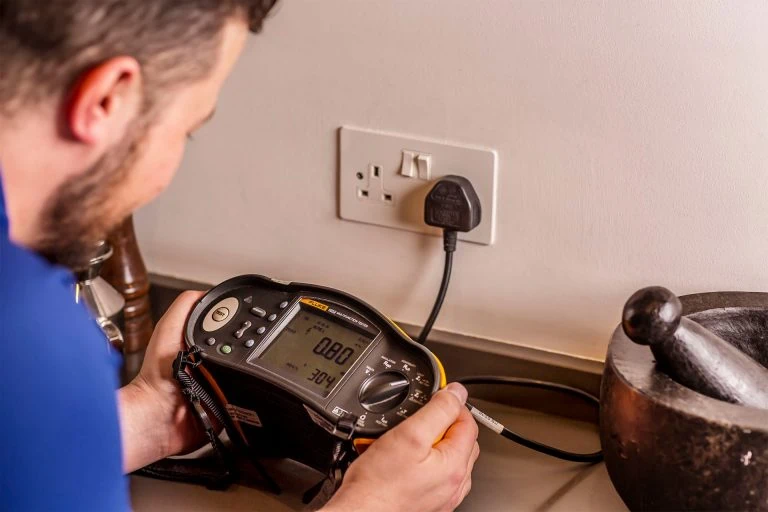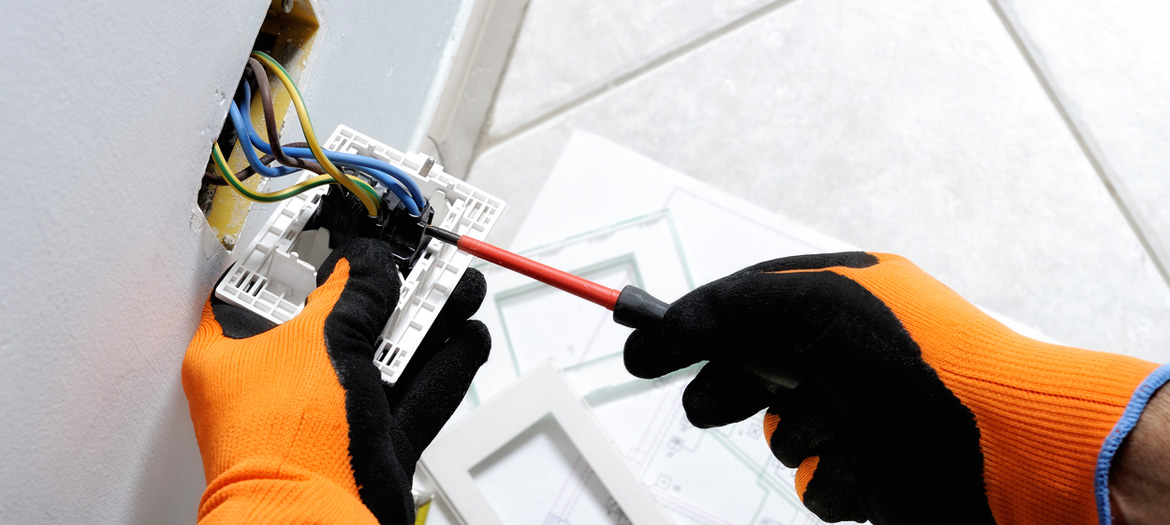Usual Electric Problems Every House Owner Must Know About
Home owners typically encounter numerous electric troubles that can affect security and performance. Problems like flickering lights and stumbled circuit breakers are extra common than lots of realize. These situations can show deeper electrical issues that warrant attention. Understanding the indications and risks related to out-of-date electrical wiring and dead electrical outlets is crucial. What measures can be required to protect against these problems? Exploring these common electrical issues could expose crucial insights for keeping a secure home setting.

Flickering Lights: Reasons and Solutions
Why do some home owners experience flickering lights? Flickering lights can be a typical inconvenience, often indicating underlying electrical problems. One key cause is defective or loosened connections within lighting fixtures or wiring, which can cause recurring power supply. Additionally, utilizing high-wattage appliances on the exact same circuit might trigger voltage variations, leading to lowering or flickering. An additional possible problem is an overloaded circuit, where way too many tools draw power simultaneously, straining the electrical system. Furthermore, abject or outdated electrical wiring can contribute to irregular electrical circulation. In some situations, flickering lights might signal an issue with the home's electrical panel or service line. House owners ought to attend to flickering lights promptly to avoid possible risks. Solutions might consist of tightening connections, rearranging home appliance load, or speaking with a certified electrical contractor for a detailed analysis. Recognizing the origin can aid ensure a secure and steady electric system in the home.
Tripped Circuit Breakers: What You Required to Know
Have home owners ever questioned what triggers their breaker to journey suddenly? This typical issue often occurs from an overload of electric circuits, where way too many tools draw power all at once. In such instances, the circuit breaker works as a security device, interrupting the flow of power to avoid getting too hot and prospective threats. Another frequent cause is a short circuit, which takes place when an online cord calls a neutral cable, developing a surge of electrical power that journeys the breaker. Ground faults can likewise lead to stumbled breakers; these take place when a real-time cord touches the ground or a based surface area, presenting severe safety threats. House owners should consistently assess their usage of high-wattage home appliances to stay clear of straining circuits. Furthermore, comprehending the function of circuit breakers can aid them react suitably throughout a journey, guaranteeing their home remains well-maintained and risk-free.
Outdated Wiring: Indications and Risks
Out-of-date circuitry can position substantial threats to property owners, usually going unnoticed up until issues occur. Houses built prior to the 1980s might still have light weight aluminum circuitry or knob-and-tube systems, which are no much longer thought about risk-free. Indications of out-of-date circuitry consist of flickering lights, often tripped circuit breakers, or shedding scents near electrical outlets. These signs may recommend that the electric system is loaded down or deteriorating.Additionally, homeowners could see scorch marks around buttons or electrical outlets, which can suggest overheating. The risk of electrical fires considerably raises with obsolete circuitry, as these systems were not created to deal with modern electrical lots. Homeowners are motivated to have their wiring checked frequently, particularly when renovating or adding brand-new devices. By identifying these indications early, they can prevent hazardous circumstances and keep a much safer living environment. Updating to present electrical requirements is a proactive action in keeping home safety and security and effectiveness.
Frequently Blown Fuses: Repairing Tips
Regular blown merges can suggest underlying electrical concerns that may originate from outdated wiring or overloaded circuits. Property owners experiencing this issue ought to initially determine the devices linked to the influenced circuit. It is suggested to prevent using several high-wattage tools all at once, as this can result in circuit overload. If the problem continues, inspecting the circuit box for indications of wear or damages is important; a faulty fuse box might call for replacement.Additionally, looking for loose links within the circuit can help protect against future incidents. Property owners must also verify that the merges being made use of are of the appropriate amperage, as utilizing a wrong fuse can exacerbate the issue. Speaking with a certified electrical expert is advised to review the electric system further if these troubleshooting pointers do not deal with the problem. Attending to these problems quickly can aid minimize threats and assure the safety and security of the home's electrical facilities.
Dead Outlets: Typical Causes and Fixes
When a house owner comes across a dead electrical outlet, it can commonly be a resource of irritation and complication. A number of typical causes might lead to this problem. One frequent culprit is a stumbled breaker, which can be conveniently reset. Homeowners should evaluate their electric panel to inspect if any type of breakers are in the off position. Another possibility is a defective electrical outlet itself, which might call for substitute. In addition, loosened circuitry connections within the electrical outlet can interrupt power flow, making assessment essential.Sometimes, the problem might come from an overloaded circuit, especially when multiple tools are linked. In such situations, redistributing the electrical load can settle the problem. Property owners need to likewise consider the age of their electrical wiring; older systems might call for updates to satisfy modern electrical needs. If these steps do not remedy the situation, speaking with a qualified electrical expert is suggested to ensure safety and security and proper medical diagnosis.
Electrical Shocks: When to Be Concerned
Just how can property owners establish whether an electric shock warrants worry? Property owners need to initially analyze the intensity and context of the shock. A light static shock, typically felt when touching metal items, is typically safe and typical. Nevertheless, if the shock occurs while connecting with a plugged-in appliance or outlet, it may indicate a more serious issue.The place and frequency of the shocks are vital. Repeated shocks from the exact same source, specifically in wet areas like shower rooms or kitchen areas, can signal defective electrical wiring or poor grounding. Home owners ought to additionally take into consideration the experience of the shock; a shock that triggers discomfort or muscle mass tightenings is more worrying than a simple tingle.If there's any kind of unpredictability, it is a good idea to speak with a certified electrical contractor. Disregarding possible electric hazards can lead to significant safety and security dangers, consisting of fire or serious injury.
Overloaded Circuits: Prevention and Precaution
Overloaded circuits posture considerable threats in property setups, commonly causing electrical fires or equipment damages (Sydney Level 2 Electrician). Homeowners need to identify the signs of an overloaded circuit, such as frequently tripped breakers or lowering lights. Executing preventive safety and security practices can aid mitigate these dangers and guarantee a more secure living setting
Recognizing Overloaded Circuits
What signs show that a circuit may be strained? Home owners need to be alert for numerous crucial indications. Often stumbled circuit breakers or blown integrates suggest too much load on the circuit. Dimming or flickering lights, particularly when other devices are in use, can indicate an insufficient power supply. Additionally, outlets or buttons that really feel warm to the touch may show getting too you can try here hot, a prospective fire threat. Uncommon buzzing sounds from outlets likewise call for focus, as they can symbolize electric concerns. Finally, if devices operate inefficiently or stop working to start, it might be an indication of an overloaded circuit. Identifying these indicators early can help prevent serious electric troubles and advertise a more secure home setting.
Preventive Safety And Security Practices
To keep a effective and safe electric system, property owners have to apply preventive security methods that deal with prospective circuit overloads. One efficient step is to stay clear of linking a lot of devices to a single outlet, as this can exceed the circuit's ability. Utilizing power strips with integrated breaker can aid disperse power securely. Homeowners should also routinely inspect cables and home appliances for damages and change any faulty tools promptly. It is critical to ensure that circuit breakers are working correctly and to be knowledgeable about the total electrical power being utilized in each circuit. Furthermore, consulting a certified electrician for routine assessments can determine prospective issues prior to they escalate, guaranteeing a safer living setting and prolonging the life-span of electrical systems.
Often Asked Questions
Just how Typically Should I Have My Electrical System Inspected?
Regular assessments of electrical systems are suggested every 3 to five years. House owners ought to take into consideration extra constant checks if they experience concerns, take on remodellings, or reside in older residential properties to assure safety and security and compliance.
Can I Deal With Electrical Issues Myself or Work With an Expert?

What Are the Indicators of an Electric Fire Risk?
Indicators of an electric fire risk consist of regularly stumbled circuit breakers, flickering lights, burning odors, blemished outlets, or warm, buzzing cords. Homeowners ought to continue to be cautious and look for professional help if any one of these indications are present.
How Do I Know if My Home Requirements an Electrical Upgrade?
To identify if a home needs an electrical upgrade, signs include frequent breaker journeys, outdated electrical wiring, insufficient outlets, flickering lights, and the visibility of older electrical panels, my company showing prospective safety and security hazards and inefficiency.
Are There Particular Safety And Security Tips for Do It Yourself Electrical Work?
When thinking about DIY electric job, one must constantly switch off power, utilize protected devices, confirm circuit performance, comply with neighborhood codes, and get in touch with specialists for complicated tasks to assure safety and avoid accidents. An additional possible problem is an overloaded circuit, where as well several devices attract power simultaneously, stressing the electrical system. The risk of electric fires substantially boosts with outdated circuitry, as these systems were not created to deal with modern electric tons. Regular blown integrates can suggest underlying electric issues that might stem from outdated circuitry or overloaded circuits. To maintain a reliable and secure electric system, home owners should apply precautionary safety methods that deal with possible circuit overloads. ASP Level 2 Electrician. Signs of an electric fire danger include regularly tripped circuit breakers, flickering lights, melting odors, tarnished outlets, or cozy, buzzing wires